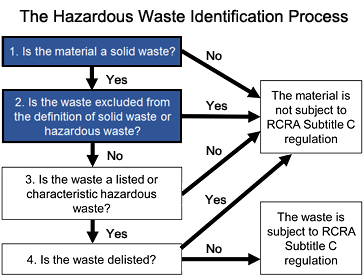The 45-Second Trick For Reclaim Waste
The 45-Second Trick For Reclaim Waste
Blog Article
A Biased View of Reclaim Waste
Table of ContentsAll About Reclaim WasteNot known Incorrect Statements About Reclaim Waste See This Report on Reclaim WasteThe Greatest Guide To Reclaim WasteA Biased View of Reclaim WasteThe Best Strategy To Use For Reclaim Waste
Through correct fluid waste monitoring, firms can minimize energy-intensive therapy procedures and disposal costs. By following a system for taking care of liquid waste, firms can avoid costly fines and charges and prevent unfavorable publicity.Stay in advance of guidelines and keep a secure work environment with a digitized compliance tool. Identifying liquid waste is crucial for effective storage space, treatment, and disposal. Environmental, Wellness, and Security (EHS) teams, waste administration officers, and compliance managers can take care of these wastes safely and effectively when they recognize the essentials: Generated from houses, this sort of fluid waste originates from commodes, sinks, showers, and cleaning machines.
(https://profiles.delphiforums.com/n/pfx/profile.aspx?webtag=dfpprofile000&userId=1891248036)Accumulate depictive samples from numerous factors within the waste stream to guarantee precision. Conduct periodic testing to track any changes in the make-up. Maintain in-depth documents of characterization for future recommendation and conformity functions. Liquid waste, especially unsafe ones, presents considerable dangers during this action. Correct procedures decrease spills, leaks, and other accidents that might harm the employees and the general public.
Reclaim Waste for Beginners
Set apart the waste based on its type (e.g., harmful or non-hazardous) to guarantee appropriate handling. Store waste in safe and leak-proof containers to avoid spills during collection. Label the containers suitably, consisting of the type of waste, prospective hazards, and handling guidelines. Tons the safeguarded containers into transport lorries with vacuum cleaner trucks or mobile containers.
Disinfection (e.g., chlorination, ultraviolet light, ozonation) and nutrient removal (e.g., denitrification and phosphorus obliteration) are suggested under rigid policies. Various business violated numerous fluid waste disposal policies in current years.
After choosing the best kind of treatment technique for fluid waste, firms must locate ways to take care of this properly. Right here are some effective techniques of fluid waste management: get most dealt with liquid waste that fulfills discharge criteria. describes utilizing treated wastewater in agricultural lands for irrigation as long as the effluent meets sanitary levels per regulations.
The Main Principles Of Reclaim Waste
are used by markets that generate huge quantities of low-toxicity liquid waste. Shallow containers have liquid waste that is enabled to evaporate with all-natural processes. The deposit left can be taken care of in landfills. entails burning fluid waste at heats and converting it right into gas and ash - liquid waste disposal melbourne. This sort of disposal undergoes stringent environmental guidelines due to potentially unsafe exhausts.
The findings ought to be documented, examined, and stored not simply for entry to regulatory authorities yet additionally for making enhancements in the future. Share info with relevant stakeholders (e.g., staff members, regulative government agencies, and nearby communities) to maintain openness and accountability.
Getting My Reclaim Waste To Work
Regardless of the firm size or sector, there are various obstacles connected with this task. Firms that can not spend in centers must think about collaborating with the public industry for much better solutions (industrial wastewater treatment).
Liquid waste describes any kind of product in a fluid state that is excess, unwanted, or disposed of. One considerable obstacle for companies is the lack of appropriate storage space centers for liquid waste. Partnering with liquid waste services will greatly lessen this obstacle Criterion avoid bins and various other containers that are generally utilized for solid waste are usually insufficient for the one-of-a-kind requirements of dealing with fluid products.
A Biased View of Reclaim Waste
This blog explores the qualities of fluid waste, talking about just how spills and contamination cases can be taken care of properly. It likewise discovers the steps companies can take to prevent future leakages and what to do when spills certainly occur. Fluid waste contains any type of unwanted or surplus material that exists in a fluid kind and is established for disposal.
This kind of waste emerges when a product is no more needed, similar to any type of other kind of trash. At times, this indicates simply throwing it away, which can take place as an outcome of creating greater than needed. Nevertheless responsible management with appropriately getting rid of is a must. It is vital to involve qualified fluid waste monitoring specialists when moving or throwing away fluid waste.

The Ultimate Guide To Reclaim Waste
"product has to pass via a 0.45-micron filter at a stress differential of 75 psi" in order to be specified you can look here as a liquid. Both have their distinctions.
Oil spills can cause soil contamination and other environmental disasters. Both organizations and individuals can substantially benefit from recognizing proper trash disposal procedures via nine best practices in waste monitoring. These methods are lined up with the recognized waste pecking order. Waste prevention is the most reliable approach for taking care of sources and lowering ecological influence.

Report this page